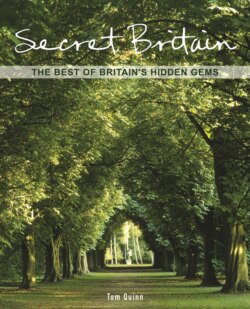Читать книгу Made in Great Britain - Tom Quinn - Страница 5
На сайте Литреса книга снята с продажи.
Introduction
ОглавлениеWhen you look at Britain on a map of the world, it soon becomes apparent that the country is a modestly proportioned offshore island. Three distinct countries: England, Scotland and Wales make up Britain. And, for all its apparent small size the island has an extraordinary variety of landscapes: from the wild hills and fells of Scotland, the Lake District and Northumberland, to the flat plains and ancient villages of East Anglia; and the tiny fishing villages and hidden beaches of Cornwall and Devon to the quiet downs and meadows of Kent and Sussex. Then there are rocky, wildlife-rich coastlines, mudflats and estuaries, lowland meadows and ancient farms, gin-clear chalk streams and broad, rain-fed rivers.
The rich diversity of this landscape is matched – if not exceeded – by the extraordinary architectural wealth of Britain’s villages and towns. There is hardly a place in the entire country that does not contain something of interest: ancient abbeys, early almshouses and timber-framed cottages, magnificent country houses and castles, tiny churches and fortified manor houses.
Of course, much of England, Scotland and Wales is already well known. Visitors from both home and abroad discovered long ago the delights of Bath and Stonehenge, Burghley House and Westminster Abbey – and, indeed, of many less famous places – but the huge amount that remains to be explored is the main justification for this book. It is all too easy to miss the gems that hide behind the more obvious landmarks: places such as the Jew’s House in Lincoln, which is the oldest domestic building in Britain; the historic semaphore tower at Chatley Heath in Surrey; or the country’s last remaining wooden Saxon church, tucked away in the Essex countryside at Greensted.
Away from these wonderful architectural survivals, often in the more remote corners of the countryside, can be found a wealth of stunning landscapes and habitats that are almost too numerous to mention: quiet hilltops, lush, secluded valleys and wide open fens.
This book could have been called ‘Forgotten Britain’, but the truth is that many of the places described here are not forgotten at all – or at least not entirely. Local people and those ‘in the know’ have long enjoyed the hidden gems on their doorsteps. No one, I’m sure, would be more delighted than they to know that with the publication of this book the places of which they are so proud will be enjoyed by a wider circle.
An Italianate villa in the Welsh village of Portmeirion.
